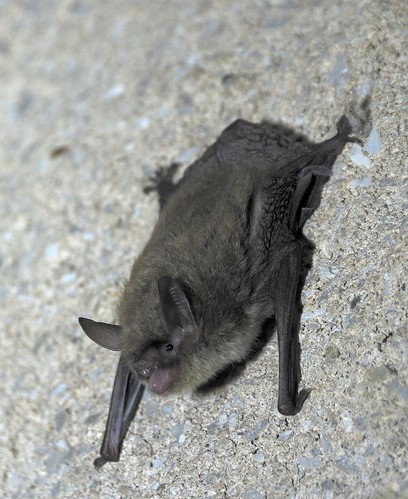
Sybill Amelon is trying to repair the damage Bram Stoker did to bats’ public image.
A research wildlife biologist with the U.S. Forest Service’s Northern Research Station in Columbia, Mo., Amelon has introduced bats to more than 20,000 primary, secondary and college students and teachers. Over the past 20 years, she has explained bat biology and lifecycles to master naturalist classes, Audubon clubs, garden clubs and native plant societies. Through her research and conservation efforts, she has raised awareness about bat species, while inspiring people to save them.
Amelon’s work was recently recognized with a regional Gifford Pinchot Excellence in Interpretation and Conservation Education Award, a national accolade given to Forest Service employees for achievement in environmental interpretation and conservation education. The annual award is named in honor of the first Forest Service chief.
Long before she became a scientist, Amelon was fascinated with bats.
“They’re such an amazing group of species,” she said. “They eat every kind of diet in the world, and they’re found everywhere but Antarctica. They’ve adapted to a niche that nothing else has adapted to.”
While they amaze some of us, they have not had universal appeal, thanks in part to Mr. Stoker and the less-than-positive depictions of bats in his enduring novel “Dracula.” Amelon tries to set the record straight: Bats are not blind, they are no more likely to be rabid than other mammals, and getting themselves tangled in long hair is something they do mostly in summer camp mythology.
Two years ago, Amelon’s presentation to a group of master naturalists in St. Louis, inspired some to volunteer to help with research. Amelon outfitted them with acoustic monitoring equipment to track bats in the city’s’ urban areas. The results were surprising: the group identified active gray, red, Indiana and big brown bats in St. Louis during the summer months. The success of the project has allowed Amelon to expand her research data collection to other cities, including Kansas City, Mo. and Springfield, Mo., again with the help of citizen scientists.
Amelon says that it’s important to track bats in places where they are thriving because it may help scientists monitor the impact of white-nose syndrome. Caused by a fungal pathogen, the deadly disease was first identified in New York in 2006 and has killed thousands of hibernating bats in 22 states in the United States and five Canadian provinces. “We’re losing so many bats in caves,” Amelon said. “We need to know what other habitat they are using, including urban habitat, and where they are thriving.”

